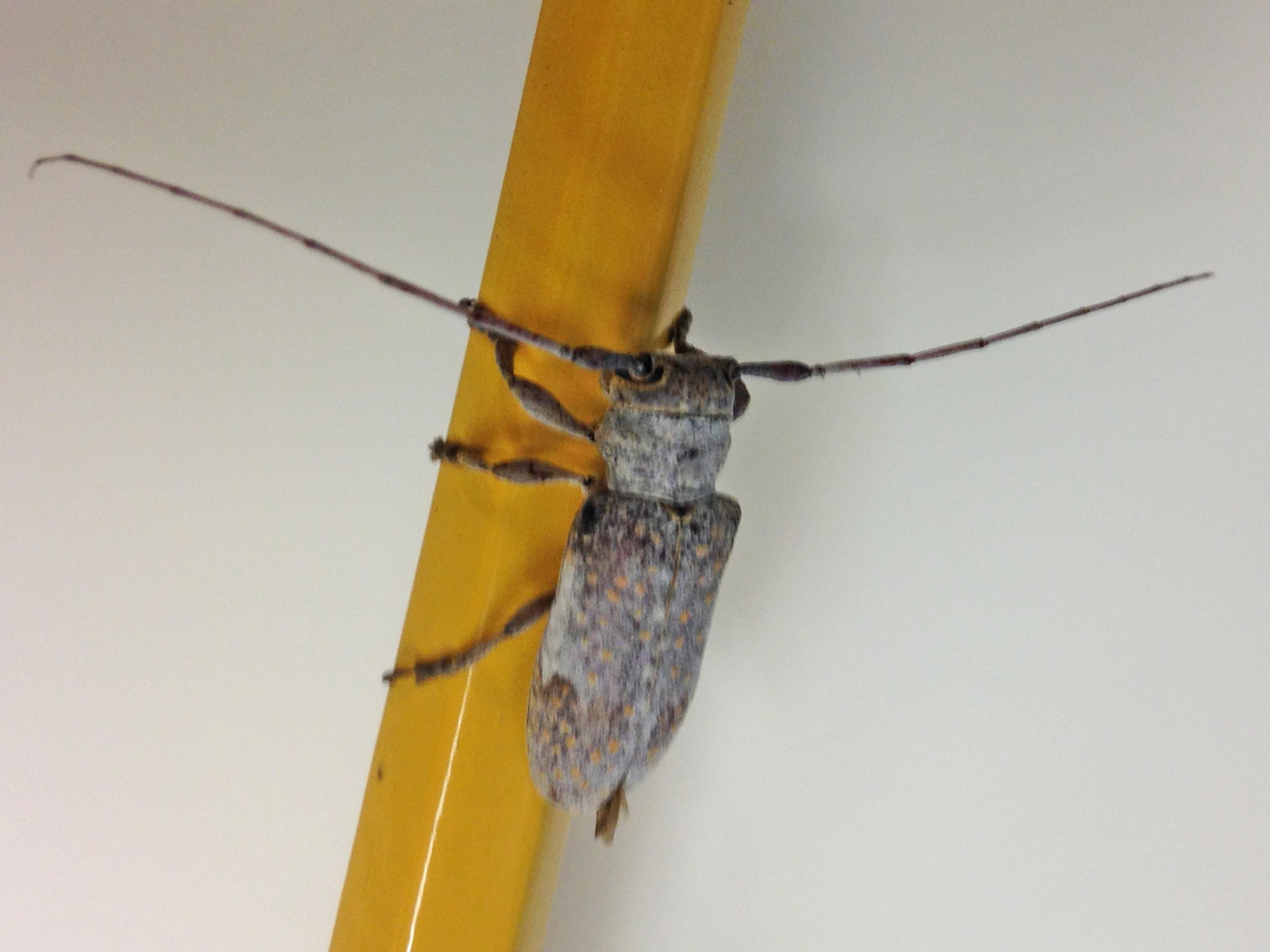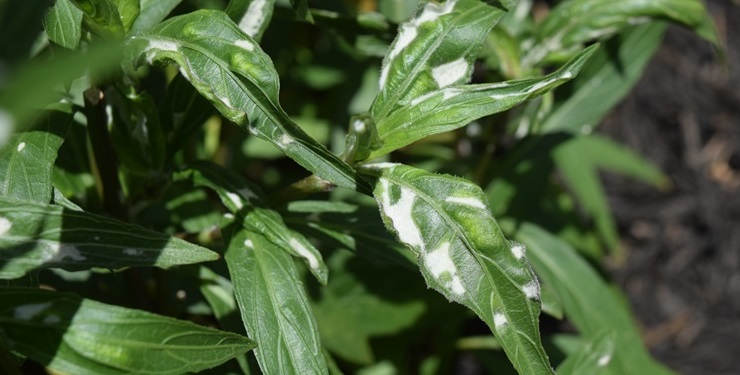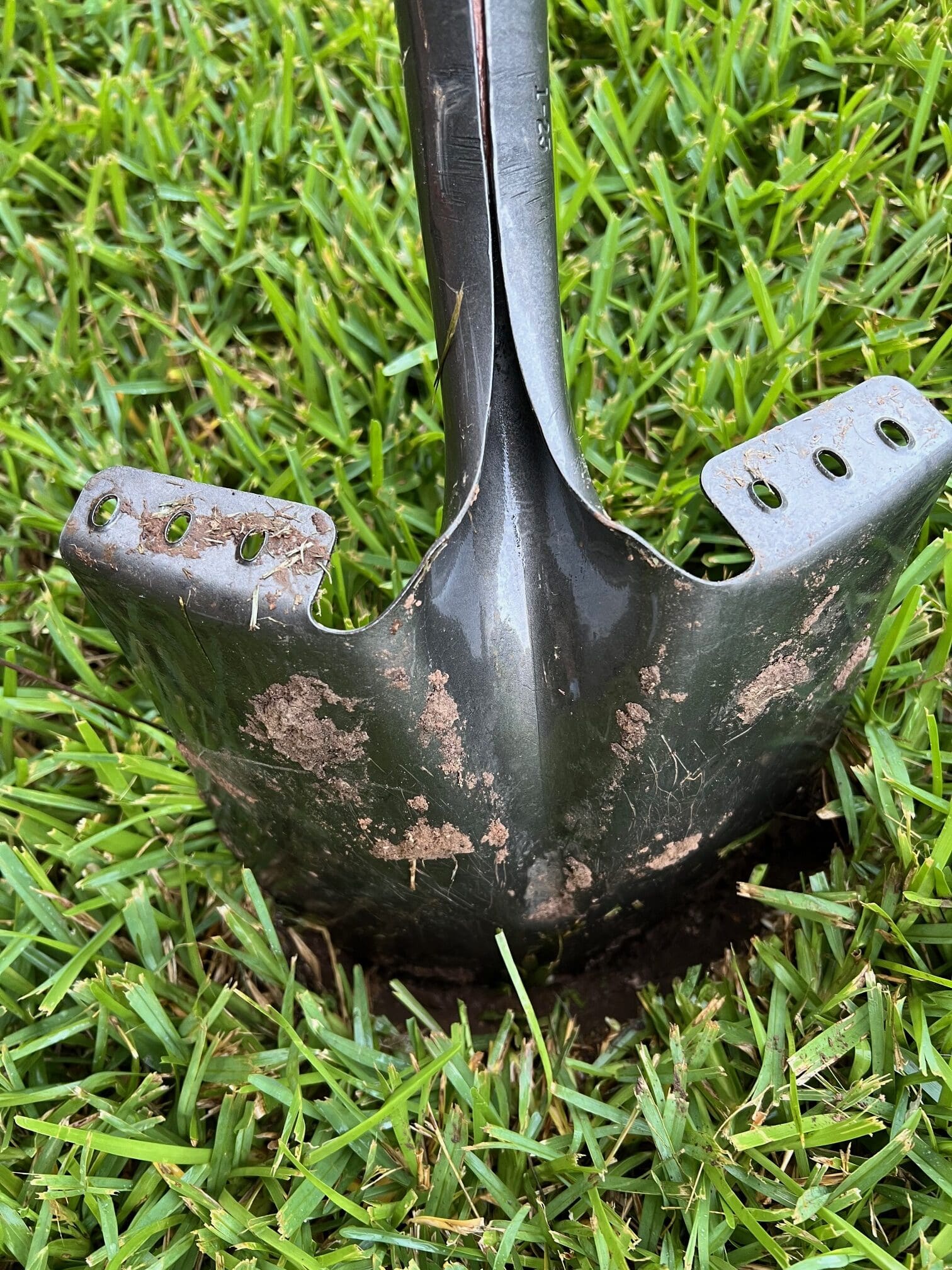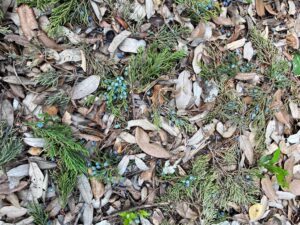
I came out one morning and my driveway was covered in the tips of the branches from my enormous Cedar tree. (Actually, what we call a Cedar in Central Texas is really an Ashe Juniper.)
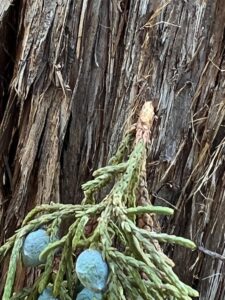
I picked up one of the fallen branch tips. It was about 3-4” long. I examined the cut end of the twig. Yep. I could see the smoothly chewed groove that caused the twig to fall. It was Twig Girdler damage, all right!
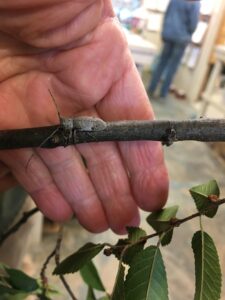
Twig Girdlers are small beetles that may cause disfiguring damage to many species of trees. Adults can appear from late August through October. After mating, the female beetle chews a clean-cut groove around a branch. She then crawls to the end of the branch and deposits an egg into notches chewed into the bark. Sometimes the branch falls right away, or it may hang on and fall during a wind storm. Larvae hatch from the eggs in about 7 days, then begin tunneling underneath the bark. The larvae go through several changes during the year (instars) before transforming into pupae the following summer. Sometimes some of the larvae may not complete development until spring of the following year, which accounts for some girdling occurring in the spring as well. (That was when my cedar tree was attacked!)
 Twig girdlers attack elm, hackberry, pecan, persimmon, red oak, citrus, juniper, and various fruit trees. They can sever branches up to 1 ½” in diameter! The larvae feed inside the severed part of the branch and are not a threat to tree health. This fall we have had many reports on Oriental Persimmon, Pecan and Peach trees.
Twig girdlers attack elm, hackberry, pecan, persimmon, red oak, citrus, juniper, and various fruit trees. They can sever branches up to 1 ½” in diameter! The larvae feed inside the severed part of the branch and are not a threat to tree health. This fall we have had many reports on Oriental Persimmon, Pecan and Peach trees.
The best control is to pick up the fallen pieces and dispose of them. This will reduce the numbers to emerge the following year. No chemical control is recommended, as they do little overall damage and it would be hard to time sprays to control the adults.
I sure had a PILE of branch tips to pick up! Darn those pesky Twig Girdlers, anyway!

